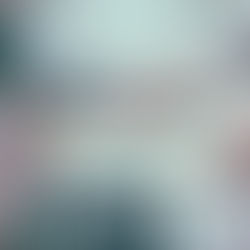Does Shape And Size Matter?

We’re now on part 5 of our 6-part series of helping you plan a perfect print job that’ll make you stand out from the crowd. If you’ve missed our past few blogs then here’s a link so you can catch up!
So far, we’ve given you some awesome information to help you get the ball rolling but today we’re going to be touching upon the shape and the size of your print project.
Depending on what it is you’re having printed, you need to think about the size, shape and if it’s worth creating a custom shape. So, what we’d like to do is give you some standard sizing for various printed marketing tools and discuss the benefits.
Standard Sizes
A7 – 105mm x 74mm
This is the smallest size that would be recommended for print and is mostly used for promotional offer ads, due to how small it is and the amount of content you can get on there. The message should obviously be to the point.
A6 – 148mm x 105mm
This size is quite popular, it's a little similar in size to a postcard and there’s a little more room on this one. Most people use this size for direct mails campaigns as it’s lightweight and small. Maybe to promote event offers or thank you cards for loyal customers. It’s great to use for campaigns, as it can drive more sales.
A5 – 210mm x 148mm
A5 is a popular size for flyers as you’ll have plenty of room to explain your message and have a decent size heading. Make sure that when you’re printing this size of flyer or leaflet you utilise both sides and make sure your core message is duplicated. So whatever side your prospect looks at first, you’ll get their attention and they’ll read it.
Other print media it’s used for are direct marketing campaigns, product promotion, order forms or events.
A4 – 297mm x 210mm
This size is your typical standard piece of copier paper and is probably the biggest you can go before your print starts getting categorised as a poster. There’s a lot of room for mass amounts of information, it's still small enough for people to carry around with ease too.
There’s no reason why you can’t produce A4 flyers, leaflets, booklets or brochures as you’ll have more space for more content. And when you want to use lots of images then this is the size for you to choose
A3 – 420mm x 297mm
This size is a popular choice for posters and usually print that has an image base. This size is big enough for you to get ample info on and have room to expand on products so the reader has a clear idea of what you are promoting.
Not so standard sizes…
1/3 rd A4 – 210mm x 99mm
Again, this can be a popular layout and size for a flyer or a direct mail piece as it’ll fit perfectly into a DL envelope. It looks a bit different and you can use the shape for a nifty folded piece of literature to stand out at exhibitions as well.
Square!
In the digital world most platforms now show their images in a square which is why it’s seen as a cool shape to print now and looks great. Some of the more popular measurements for a square print job are 140mm x 140mm, 148mm x 148mm and 210mm x 210mm. When used in direct mail it can be used as a flash card or an infographic as it’ll stand out from normal mail.
So, depending on what you’re using your print for the size you choose will vary. It also depends on the amount of information you need to include. The number of pages may vary also. It all comes down to what’s best for the reader and how they receive it.
Shape
The last thing that’s worth pointing out as an option is a bespoke shape.
You may opt for a custom shape or a die-cut piece of marketing. This’ll ensure that you stand out from the crowd and will be a memorable experience for your prospect.
The cost of the print will be more expensive than a regular size and shape, but the effect will be much greater than using a boring bog-standard shape that your competitors will use.
So, you can really have some fun with shapes, especially with business cards as they make an awesome first impression.
If you’d like more clarity when it comes to choosing your shape and size and how important it is, give us a call on 0121 430 9000.
























